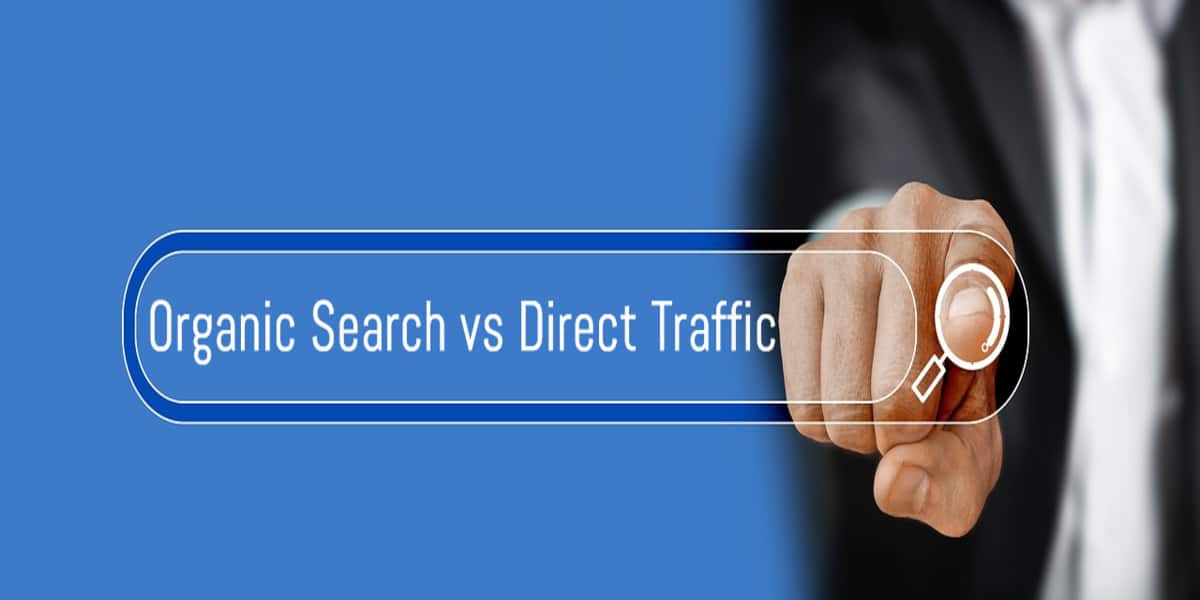Visitors who discover your website through search engines like Google or Bing are described as organic traffic. Once you hit the correct keywords, you can reel potential buyers with a robust SEO strategy. In contrast, direct traffic is when people type your URL directly into their browser to visit your website. This traffic consists of people who know your brand — so this is a highly qualified group of customers. In this post, we will look at organic search vs direct traffic, the pros and cons of each traffic source type, and how they can affect your company.
What Is Organic Traffic?
Organic traffic, such as when people show up to your site after searching for terms related to the products and services you are selling, without seeing or clicking on paid ads. Your site comes up in search results because it’s relevant to the keyword they were searching for. Build SEO so you can start generating organic traffic — Research keywords, improve your content, and link building to increase your site’s visibility to search engines.
Organic traffic is sustainable and financially beneficial, so it has been dubbed the holy grail of digital marketing. Good search engine optimization will ensure that your website continues to attract potential customers over time.
What Is Direct Traffic?
Direct traffic is the number of people who visit your site by directly inputting your URL into their browser or clicking on a bookmark. These visitors already know your brand and opt to visit again, meaning they tend to be more engaged and loyal.
Direct traffic is different as it does not come from a search engine. It’s about building such a strong relationship with your audience that they simply choose to go to you. These visitors generally click around more, convert more often, and have higher levels of intent.
Organic Search vs Direct Traffic: Key Differences
- Traffic Source: Organic search comes from search engines. Direct visitors already know your website, so they come to you by typing your url into their browsers or by bookmarking your site to access it easily.
- User intent: With organic traffic, the user is searching for something specific that you may provide, while direct traffic sends someone who already knows and loves your brand.
- Acquisition Cost: Organic traffic is cheaper since it is generated through SEO. Direct traffic does not exactly have an acquisition cost since in the end it deals with brand loyalty.
- Measurable: Organic traffic can be directly tracked easily using search engine data; direct referral is less often attributable to specific marketing actions.
- Sustainability: Organic traffic is generally long-lasting with good SEO, while direct traffic is trendy and depends on human behavior or marketing decisions.
The more you understand how organic search vs direct traffic generation works, the more you can make them work for a cohesive and holistic marketing strategy. When you use both well, you get better results.

Direct Vs Organic Traffic: Advantages And Benefits
Advantages of Organic Traffic
There are many reasons why organic traffic is important to a business:
- Significantly More Cost-Effective: It’s less expensive than paid ads since it is based on organic SEO (rather than having to run continuous ad campaigns).
- Prospects: They are buyers who are looking for what you sell.
- Long-Term Sustainability: SEO organic traffic keeps coming to your site, unlike paid ads that require continuous payment.
- Brand Authority and Trust: A high search ranking is a stamp of authority in the eyes of your audience.
- Boosted User Experience: Higher SEO includes better user experience, which can result in more engagement and conversion.
- Measurable and traceable: You get real-time feedback from search engines to understand the traffic source, which you can then measure and improve.
Businesses can now grow online, generate consistent leads, and decrease their cost per acquisition by tapping into organic traffic.
Advantages of Direct Traffic
There are also several benefits and advantages of direct traffic:
- Loyal and Engaged Audience: Since they reach your website directly, they likely have a loyal relationship with your brand.
- Increased Conversion Rates: Since they are not casually browsing your site, direct visitors are more likely to take action.
- Stronger Brand Awareness and Trust: Direct traffic is the best indicator that people are remembering your site and prefer it over the competition.
- Lower Bounce Rates: Direct visitors remain on the site longer and explore it more than other traffic sources.
- Easier Tracking and Attribution: It is far easier to connect your direct traffic with your marketing efforts.
- Reduced Dependency on Search Engines: If you have a good number of visitors in the form of direct traffic, you are less dependent on search engine changes and safer from their SERP volatility.
Thus, direct traffic helps form a more loyal customer base and helps stabilize online visitor numbers.
Organic Vs Direct Traffic: Analyzing the Impact on SEO
The organic search vs direct traffic relationship is vital for SEO:
- Interdependent Relationship: They bolster one another; strong organic visibility can elevate direct visits, and vice versa.
- User Behavior and Engagement: Your users interact differently with your site; you can evaluate such behavior to tune your SEO strategy.
- Branding and Authority: An optimal balance of both traffic types provides the best value in terms of branding and the accretion of search authority, which can, in turn, make your website more productive.
- Keyword Insights: You can gain insights into which search terms organic searchers employ to reach your website.
- Referral and Backlink Analysis: Monitoring your direct traffic can help gauge the potency of your marketing and the quality of backlinks.

Ways to Drive More Organic Traffic
To improve the organic traffic, one can employ various tactics to enhance the performance of the SEO strategy, including:
- Keyword research and targeting. One step is to determine which keywords the target audience uses and include them in the website content and meta tags.
- On-page optimization. Titles, URL structure, meta descriptions, headings, images, the site’s speed, and mobile friendliness are to be optimized.
- Content creation and optimization. It is best if you post it regularly. The content must be valuable, address the needs of the target audience, and demonstrate the brand’s expertise.
- Link building and authority. It is desirable that it comes from respected sources, and it can include guest posting, infographics, influencer outreach, etc.
- Technical improvements in site optimization. This involves addressing technical problems to improve crawling and indexing.
- Local SEO optimization. Increase Google Business Profile traffic by optimizing your listing with a focus on local citations and keywords.
- Ongoing Monitoring and Refinement. track performance, analyze data, and adjust your SEO strategy accordingly.
Thus, it is evident that an organic traffic increase approach is a long-term one that combines regular content creation, continuous optimization, and a measured approach to link building.
Ways to Drive More Direct Traffic
Direct traffic development is vital for business accomplishment. Here are the different ways in which you can drive more direct visits:
- Branding & Awareness: Establish your brand through cohesive messaging across all channels, including non-digital efforts. Read more about it in our Brand Bible
- Developing Comprehensive Content and User Experience: Combine quality content with best design practices and ensure that the first-time visitor will return to your website and bookmark it.
- Email Marketing and newsletters: Use email campaigns to stay in contact with your subscribers and ask them to visit your website.
- Establishing a Social Media Presence and Regular Social Media Engagement: Be active on social media, share interesting content, and engage with your audience to drive traffic straight across such channels.
- Offline Marketing Effort: Use print ads, events, and word-of-mouth to promote your website’s URL.
- Referral Programs and Partnerships: Join referral programs and build partnerships. Form relationships with businesses or influencers who refer their audiences to your site.
- Retargeting and Remarketing: Re-engage past visitors with targeted campaigns to encourage repeat visits.
- Repeat Visitors should be the Goal: Personalize content and streamline navigation to make it easy for visitors to return.
Ultimately, combining these strategies will grow your direct traffic audience base over time and add to your brand awareness, ensuring a consistent stream of ready-to-visit webmasters.
Organic Search vs Direct Traffic: Final Words
Direct visits and organic traffic are two types of visitor acquisition that you must understand well to develop an effective digital marketing strategy. Each type of traffic has pros and cons, and they can all work together in harmony to ultimately help boost your online presence. So, by using focused ways to increase both, you bring more individuals to your website, set benchmark status for the brand, and help you convert better.
Outreach Bee can certainly help you with organic traffic. We are SEO outreach with years of experience in the field. Feel free to contact us for information on how we can increase your traffic. You can also send us a message on Facebook or LinkedIn too.
Images are from Pixabay.com



PPC VS SEO: Which One Should You Go for?
What is link juice in SEO, and how can you acquire it?